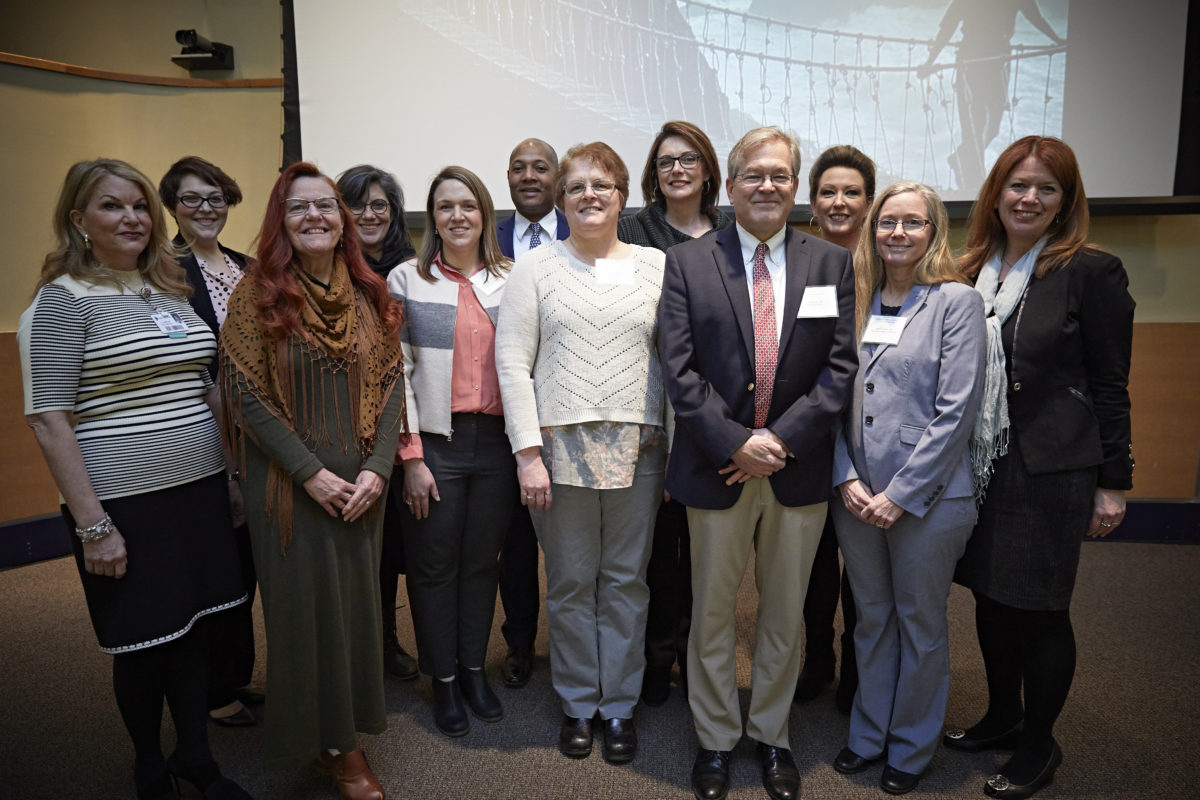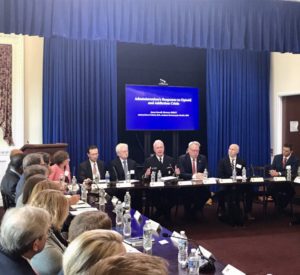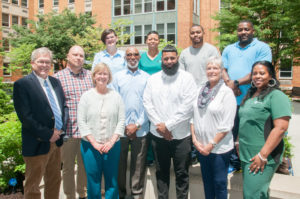Seeking solutions to the national opioid epidemic, which has claimed tens of thousands of lives due to opioid-related overdoses, hospital leaders from across the region visited Wilmington, Delaware, to learn about the innovative, successful strategies being developed at Christiana Care Health System.
These strategies include Project Engage, which brings peer counselors into the hospital care team to work with opioid-addicted patients. They also include an opioid addiction clinical pathway that identifies patients at risk of withdrawal symptoms and activates a support system to ensure they get the special care that they need.
Ken Silverstein, M.D., MBA, Christiana Care’s chief clinical officer, put the workshop in the context of the Christiana Care Way and its first two words: “We serve.”
“This opportunity to share the lessons we’ve learned in treating addiction wouldn’t happen without the hard work and expertise of our caring people in creating systems of care that serve our patients,” he said.
April Baisden, M.D., medical director of Addiction Medicine at St Mary’s Medical Center in Huntington, West Virginia, gained a lot of insight into ways to adapt Christiana Care’s innovations to the situation in her own community. And she found something else just as important but less tangible.
“The biggest benefit we came away with was a little hope,” Dr. Baisden said.
The chaos wrought by addiction has increasingly found its way into her city’s hospitals, creating anxiety among staff and raising safety concerns. Moreover, the revolving door of treatment and relapse has left many nurses and other staff frustrated and disheartened.
“That spark of hope can make a big difference,” she said.
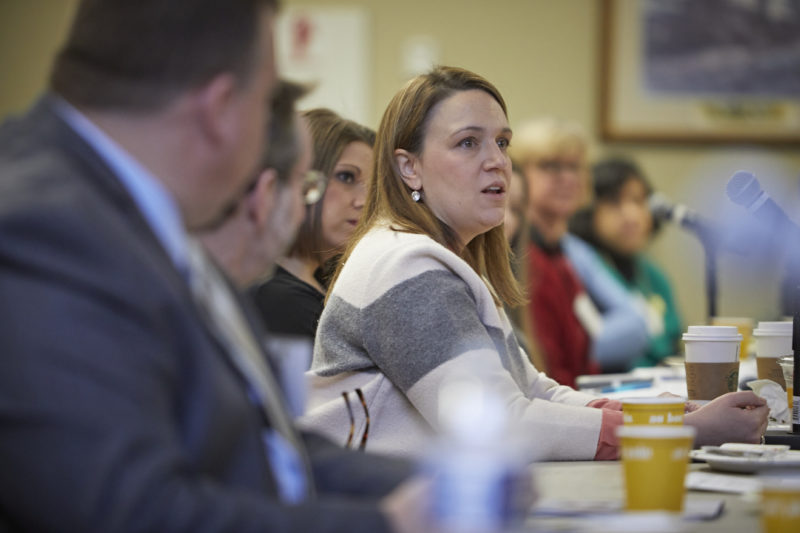
The Addiction Medicine Workshop, held Jan. 29-30 at Wilmington Hospital, welcomed visitors from six health systems and hospitals from West Virginia, Pennsylvania and Virginia. In addition to other private and public attendees, visiting health systems included Marshall Health, St. Mary’s Medical Center, Cabell Huntington Hospital, Inova Health System, Geisinger Health and Penn State College of Medicine.
“These organizations approached Christiana Care to learn about how we’re tackling the opioid epidemic,” said Linda Lang, M.D., chair of the Department of Psychiatry and physician leader of the Behavioral Health Service Line. “We are grateful for the opportunity to spread ideas and practices that germinated here in Delaware but that would help hospital leaders serve their own local communities.”
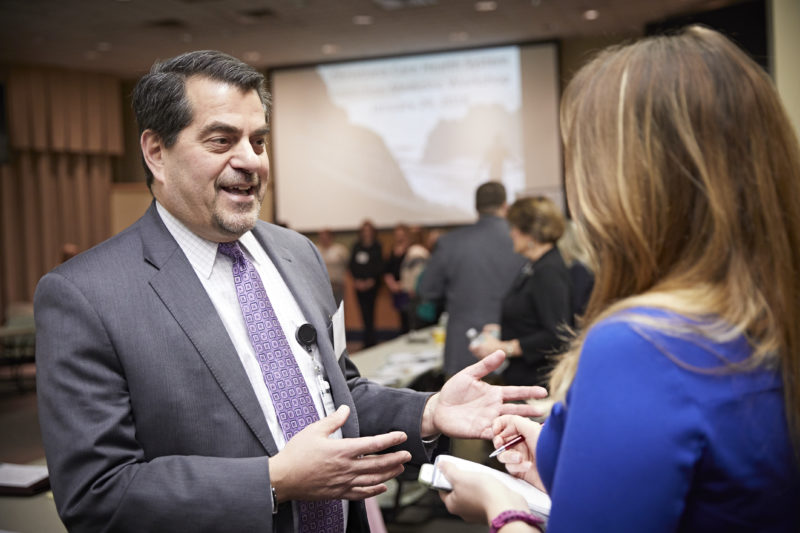
Accomplishments in addiction medicine shared by Christiana Care include:
- Project Engage, which recruits trained peer counselors to meet hospital patients at the bedside at a critical time when they are receptive to addiction treatment.
- The opioid withdrawal clinical pathway, which screens patients for opioid withdrawal and offers evidence-based interventions. The pathway has helped Christiana Care reduce 30-day hospital re-admissions for opioid withdrawal by 30 percent.
- The use of medication-assisted treatment, or MAT, such as suboxone, which dulls withdrawal symptoms and helps victims of substance use disorder begin counseling and recovery.

Sue Grigson, director of the Penn State Addiction Center for Translation and professor of neural and behavioral sciences at Penn State College of Medicine, first heard about Christiana Care’s work in addiction medicine from a National Public Radio story on Project Engage. The program’s ability to identify those with addiction at a reachable moment grabbed her attention.
“What I needed to know was how you were doing it,” she said.
Grigson came away from the workshop with 21 main points and an outline for how it might be adapted at her organization.
Damon Hamilton of Geisinger Health System attended the workshop to develop insight about how to identify patients and develop a continuum of care, including MAT clinics.
“We’re not there yet,” he said. “We’re just beginning.”
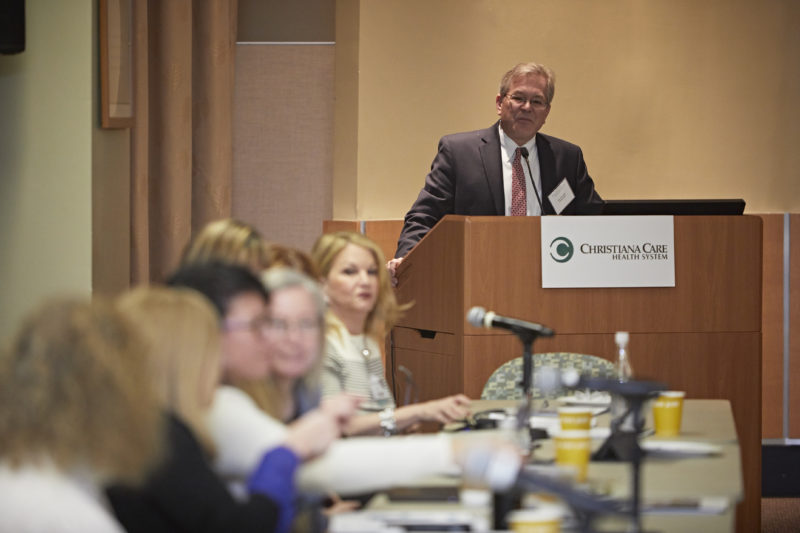
Peer coaches are essential to the team
Christiana Care Chief of Addiction Medicine Terry Horton, M.D., FACP, FASAM, said treating the chronic brain disorder of addiction with a combination of medication-assisted treatment and therapy is saving lives.
“It all starts with using the hospital and emergency department to find reachable moments and enroll patients into long-term care in as little as 12 hours,” Dr. Horton said. “Peer counselors are a key component of that moment, but they don’t have pixie dust; they need to be trained and integrated with staff.”
Finding the right counselors, he said, is less about looking for technical aptitude and more about attitude.
“You have to have heart and be able to engage,” he said. “We knew we could teach everything else.”
Merely including peer coaches does not ensure success. Training and robust integration with staff are necessary for peer coaches to reach their potential — both with patients and staff.
These relationships among peers and providers, Christiana Care learned, would be a crucial way to break down stereotypes of people with addiction.
Making a business case
In addition to the underlying moral imperative to treat addiction, Dr. Horton also noted the system must be financially sustainable before it can take root and spread.
Developing a solid business case to make optimal addiction care affordable is crucial, he said. “Good care has to be good business or it doesn’t get adopted.”
Tapping Medicaid funds to pay for prevention is one promising option being explored for the future. Preventing a handful of major cases, such as endocarditis, an infection of cardiac tissue that can result from intravenous drug use, could reduce costs by hundreds of thousands of dollars.
“Savings from one endocarditis case could support many peer counselors and treatment with suboxone,” Dr. Horton said.
He said the ideas implemented by Christiana Care, including Project Engage, have created a “rope bridge” between recovery and the hospital. Ideally, he said, that bridge should reach into the community. The workshop was also an opportunity for Christiana Care to learn about just such an effort in West Virginia.
“It’s a two-way street,” Dr. Lang said. “We don’t have it all figured out.”
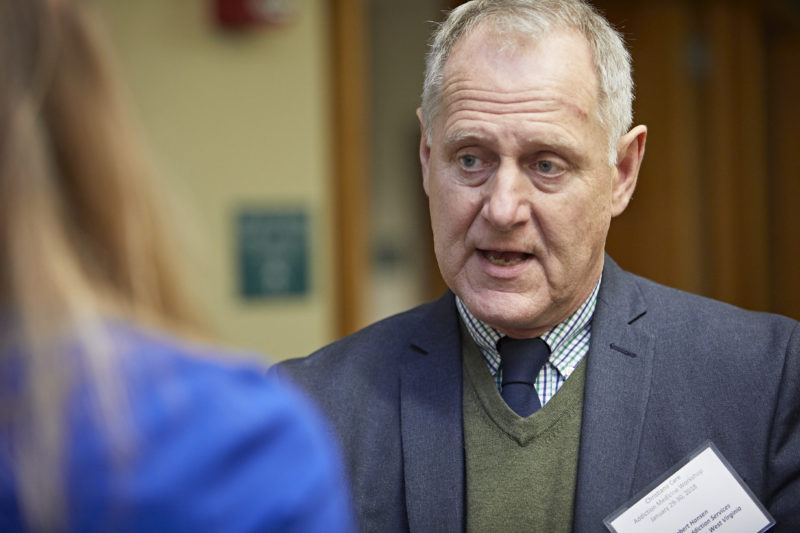
Beyond bedside
On the evening of August 15, 2016, emergency responders in Huntington responded to 26 heroin overdoses in four hours. Though the response itself was in some sense a success, as all 26 victims survived, it was also a missed opportunity: None of the victims were offered a chance to get treated for addiction.
Robert Hansen, director of addiction services at the Marshall University Joan C. Edwards School of Medicine and Marshall Health, shared early findings from a partnership with law enforcement, emergency responders and others to reach people suffering from addiction where they live.
The quick response team, which started work in December, contacts people who have overdosed within the previous 24 to 72 hours, though finding them has not been easy. But, of the 50 percent of overdose victims who have been located over the effort’s first month, nearly half entered treatment.
Dr. Lang said Christiana Care is talking to colleagues in New Castle County to explore creating a similar program here.
The crisis continues
Meanwhile, the crisis is ever-changing. Representatives of all of the health systems reported an upswing in opioid-addicted patients who are also using other drugs.
Hamilton said that at Geisinger Health System in Pennsylvania, they are seeing an upswing in opioid-addicted patients who also are using amphetamines and crystal meth. Dr. Baisden said methamphetamines are on the rise in West Virginia, while Dr. Horton said that cocaine is the growing problem in Delaware.
These non-opioid drugs complicate treatment; medication to suppress opioid withdrawal does not have the same effect on other drugs. And a relapse on one drug, Dr. Horton said, usually leads to relapse on others.
Still, the creation of evidence-based treatments for addiction are giving heart to Dr. Baisden and her colleagues in West Virginia, the state hardest hit by the opioid epidemic.
“It’s a good place to be now,” she said. “A lot more positive.”
